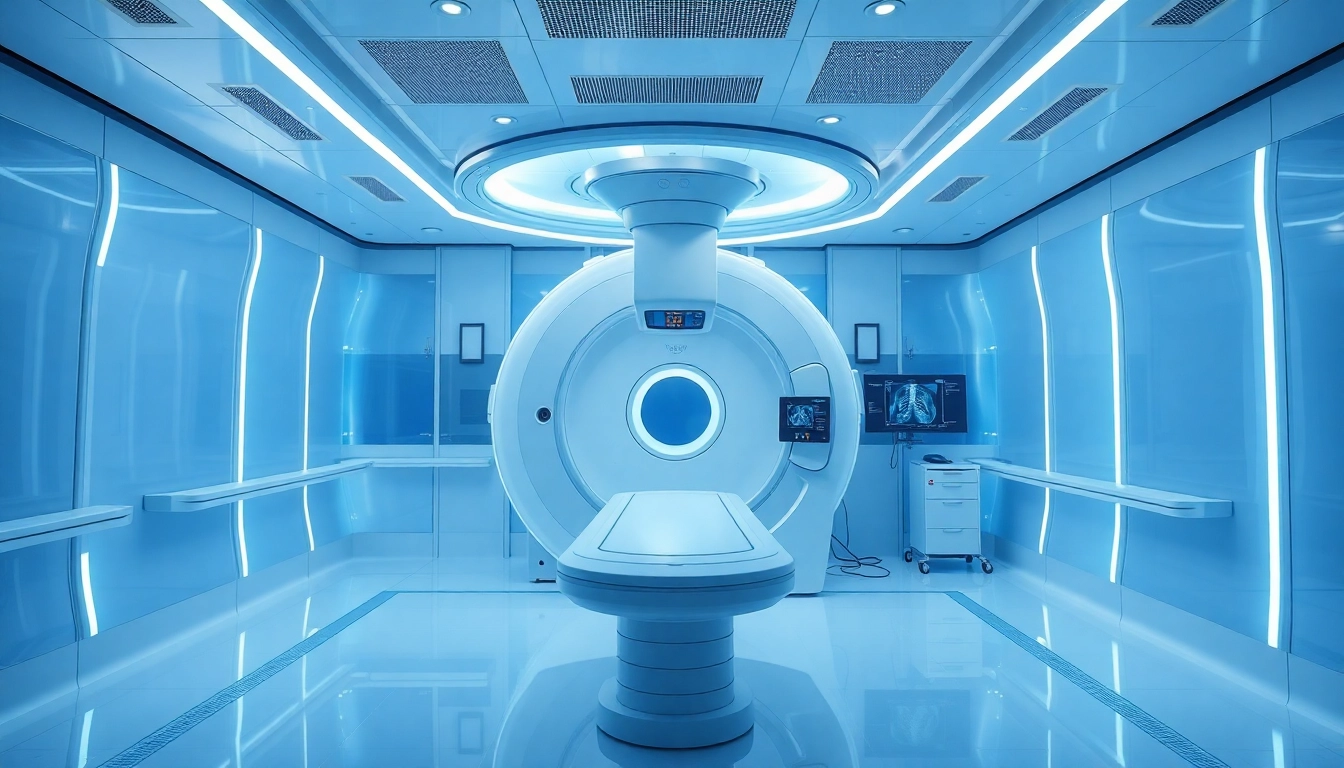Understanding Digital X-Ray Imaging
What is Digital X-Ray Imaging?
Digital X-ray imaging is a revolutionary diagnostic technique that utilizes digital sensors rather than traditional film to capture images of the internal structures of the body. This technology allows for faster image acquisition, improved image quality, and the ability to manipulate and enhance images using software tools. Unlike conventional X-rays, which require physical film development, digital images can be viewed almost instantaneously on computer screens, vastly improving workflow in medical settings.
Advantages Over Traditional X-Rays
The switch from traditional X-rays to digital X-ray imaging brings numerous advantages. Firstly, digital systems reduce radiation exposure to patients because they can produce high-quality images with less input. Secondly, the speed at which images are obtained and processed streamlines patient care significantly. Diagnosis can begin almost immediately, allowing for timely treatment. Additionally, digital images can be easily stored, retrieved, and shared, promoting collaboration among healthcare providers. The future of digital X-ray imaging holds even greater promise as technological advancements continue to unfold.
Key Technologies Behind Digital Imaging
Several key technologies play a pivotal role in the effectiveness of digital X-ray imaging. The most notable include:
- Flat Panel Detectors (FPDs): These devices convert X-rays into electronic signals, offering high resolution and quick processing times.
- Computed Radiography (CR): This uses special plates to capture X-ray data, which is then read by a scanner to create digital images.
- Image Processing Software: Advanced software applications enhance, store, and manage digital images, allowing for more nuanced diagnostics and communication among medical personnel.
Future Trends in Digital X-Ray Imaging
AI and Machine Learning Integration
The integration of artificial intelligence (AI) and machine learning in digital X-ray imaging promises to revolutionize diagnostics. AI algorithms can analyze images more quickly and accurately than the human eye, identifying potential health issues such as fractures or tumors earlier and with greater reliability. Ongoing research and development in this area aim to create systems that not only assist radiologists but also provide second opinions in the diagnostic process, reducing errors and improving patient outcomes.
Mobile and Portable Imaging Solutions
Mobile and portable X-ray systems are becoming increasingly popular, especially in emergency settings or rural healthcare settings where traditional imaging solutions may not be feasible. These portable systems allow for imaging on-site, ensuring patient comfort and reducing the need to transport patients to facilities with fixed imaging equipment. Innovations in portable imaging continue to improve image quality, making it comparable to that of traditional systems.
Enhanced Image Quality and Speed
Future advancements are expected to significantly enhance image quality and processing speeds in digital X-ray imaging. Innovations in sensor technology and image reconstruction algorithms lead to clearer and more detailed images while reducing the time it takes to capture and process these images. Such improvements could potentially lead to even better diagnostic accuracy, allowing for the early detection of conditions that traditional methods might miss.
Challenges Facing Digital X-Ray Imaging
Cost of Implementation
One significant barrier to adopting digital X-ray technology is the high initial cost of equipment and software. Hospitals and clinics must invest in digital imaging systems, which can be prohibitive for smaller practices. However, it is essential to weigh these costs against the long-term savings and increased efficiency digital systems can provide.
Data Privacy and Security Concerns
As with any digital technology, data privacy and security are paramount concerns. The transmission and storage of patient images generate sensitive health information, which must be protected against unauthorized access and breaches. Healthcare providers must implement robust cybersecurity measures to safeguard patient data while ensuring compliance with regulations such as HIPAA.
Training Medical Staff on New Technologies
The introduction of digital X-ray systems necessitates comprehensive training for medical staff. Radiologists, technologists, and support staff must become proficient in operating new systems, understanding software capabilities, and correctly interpreting digital images. Ongoing training and professional development are essential to maximize the benefits of the technology while ensuring patient safety and care quality.
Best Practices for Implementing Digital X-Ray Imaging
Evaluating System Requirements
When implementing digital X-ray imaging, it is vital to evaluate system requirements carefully. This includes analyzing the existing infrastructure, understanding the specific needs of your practice or facility, and considering factors such as the volume of patients, types of imaging needed, and budget constraints. A thorough evaluation helps ensure that the selected system aligns with operational needs and enhances overall workflow.
Ensuring Compliance with Regulations
Compliance with local, state, and federal regulations is crucial when implementing digital imaging systems. Facilities must adhere to safety standards, follow guidelines for radiation use, and ensure that all medical equipment is maintained and calibrated properly. Regular audits and training programs can help healthcare providers stay compliant and avoid potential legal issues.
Regular Maintenance and Upgrades
To ensure the longevity and effectiveness of digital X-ray systems, regular maintenance and timely upgrades are essential. Healthcare facilities should establish scheduled maintenance checks, invest in software updates, and stay informed about new technological advancements. Proactive management of imaging systems can result in lower operating costs, improved imaging quality, and enhanced service delivery.
Measuring the Impact of Digital X-Ray Imaging
Performance Metrics to Consider
Measuring the impact of digital X-ray imaging involves evaluating several performance metrics. Key metrics may include:
- Turnaround time for image acquisition and reporting.
- Image quality assessments based on clarity, detail, and diagnostic accuracy.
- Radiation dose reduction comparisons when transitioning from traditional to digital systems.
Careful monitoring of these metrics will help healthcare providers assess the effectiveness of their digital imaging systems and identify areas for improvement.
Patient Feedback and Experience
Patient experience is a crucial factor in assessing the impact of digital X-ray imaging. Gathering feedback regarding comfort, convenience, and satisfaction with the imaging process can provide insights into the overall quality of care. Positive patient experiences often correlate with improved health outcomes, making it vital for healthcare providers to prioritize patient satisfaction while implementing advanced imaging technologies.
Long-Term Benefits for Healthcare Providers
The long-term benefits of adopting digital X-ray imaging for healthcare providers are significant. Improved efficiency, reduced operational costs, better patient care, and enhanced diagnostic capabilities can lead to a higher return on investment. Moreover, staying current with technological advancements positions healthcare facilities as leaders in the medical community, attracting more patients and professionals.



